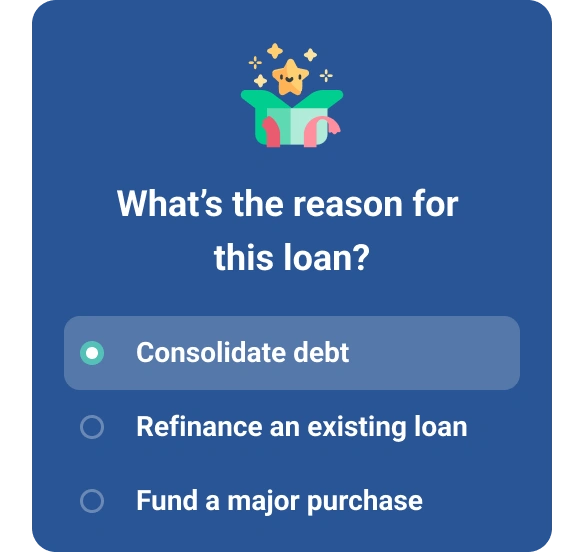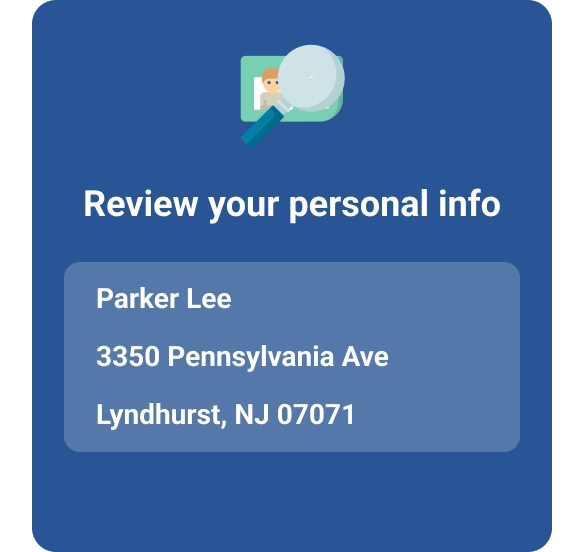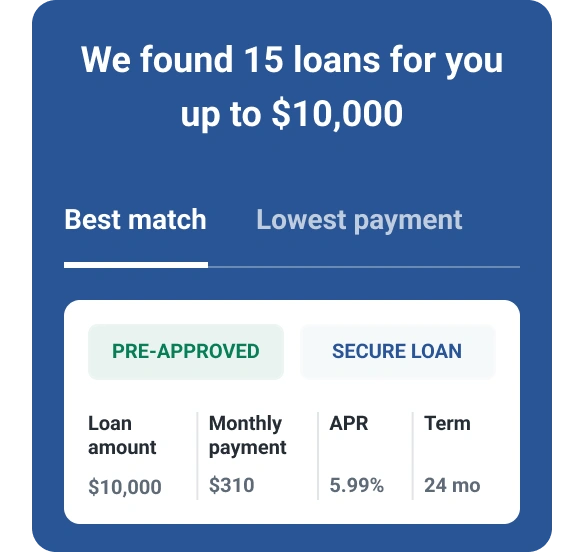Personal Loan vs. Personal Line of Credit: What’s the Difference?
Quick Answer
A personal loan offers a lump-sum disbursement and a fixed repayment term, while a personal line of credit provides a revolving credit line you can tap when you need access to cash.

If you're looking to borrow money for a specific purpose, a personal loan or personal line of credit (PLOC) could be worth a look. However, the two financing options differ greatly in how they work, including how to access your money and how to repay it.
If you're thinking about borrowing money, here's what to know about personal loans and PLOCs to determine which is better for you.
Differences Between Personal Loans and Lines of Credit
While the two lending options sound similar, there are some key differences that can impact you as a borrower. Here's a quick summary of those differences:
- Funding: When you take out a personal loan, the lender will typically disburse the full loan amount (minus applicable origination fees) within a few days. With a PLOC, however, you'll get access to a credit line you can draw from at any time—though there may be a minimum draw amount.
- Repayment: Personal loans have a fixed repayment term that begins when the funds are disbursed. In contrast, a PLOC offers a draw period, during which you can borrow money and make minimum payments, and a repayment period, over which you'll pay off the remaining balance.
- Interest rates: Personal loan rates tend to be fixed, so your rate will remain the same for the life of the loan. On the flip side, PLOCs usually have a variable rate that fluctuates over time.
- Fees: Some personal loans come with an upfront origination fee and may also charge late fees if you miss a payment. In addition to an origination fee, personal lines of credit may also charge annual fees and a transaction fee each time you draw money, as well as a late fee.
Read on to learn more about each option and their advantages and disadvantages.
Personal Loan
Personal loans are a versatile form of credit, allowing you to use your funds for just about anything you want and with few restrictions, if any. They're often used for one-time needs, such as consolidating higher-interest credit card debt, covering medical expenses, financing a home renovation or paying wedding or funeral expenses.
Depending on the lender and your creditworthiness, you may be able to borrow anywhere from $250 to $100,000. Repayment terms can also vary by lender and may range from one to seven years. Personal loans are a form of installment credit.
While some personal loans charge an origination fee, which can range from 1% to 12% of the loan amount, you may be able to qualify for a loan with no origination fee if you have good or excellent credit—meaning a FICO® ScoreΘ and Experian credit report of 670 or higher.
Pros of Personal Loans
- Fixed interest rate: Because most personal loans have a fixed rate of interest, you don't have to worry about your monthly payment changing over time. This predictability can be especially helpful if you're on a budget.
- Immediate access: If you're looking to borrow money for a one-time expense, receiving the full loan amount upfront can be a simpler approach compared to a personal line of credit.
- More accessible: Personal loans are available to borrowers across the credit spectrum.
Cons of Personal Loans
- Origination fees: If you don't have stellar credit, it may be challenging to find a lender that doesn't charge an origination fee. What's more, that fee is deducted from your loan disbursement, which may require you to borrow more to meet your needs.
- Can be expensive: While some lenders offer interest rates as low as single digits, you may not qualify if you don't have a great credit score. In fact, some lenders charge annual percentage rates (APRs) upwards of 35%.
- No ongoing access to credit: If you're looking to borrow money for multiple needs over time, you may need to borrow a lot more than you need right now. With a higher loan amount, however, your monthly payments could become unaffordable.
Personal Line of Credit
Like a credit card, a personal line of credit is a form of revolving credit, allowing you to draw from your credit line anytime during the initial draw period. When you're approved, you'll be assigned a credit limit, which can range from $500 to $100,000.
Like personal loans, PLOCs can be used for just about anything. However, they tend to be better for ongoing needs, such as a long-term home improvement project or extensive medical care.
During the initial draw period, which may last from three to five years, you can pull money from your credit line using a linked debit card or paper checks up to your limit. During this time, you typically only have to make minimum monthly payments based on your balance. However, you can pay more to reduce your principal balance and open up more available credit.
Once the draw period ends, you'll enter a repayment period, which can last as long as 10 years in some cases. During this period, you'll pay down your remaining balance with no more access to the credit line.
Pros of Personal Lines of Credit
- Ongoing access: Rather than a lump-sum disbursement, a PLOC gives you ongoing access to a credit line for several years, giving you more flexibility with your borrowing needs.
- Flexible payments: During the draw period, your minimum payments will be relatively low, which can be better for borrowers with relatively limited financial flexibility.
- Potential for lower interest charges: You'll only pay interest on the amount you borrow rather than the full credit limit. In contrast, a personal loan charges interest on the full loan amount from the start.
Cons of Personal Lines of Credit
- Costs: If your rate is variable, it can potentially increase over time, resulting in more interest charges. Interest rates usually start higher compared to personal loans, but they rarely go above 30%. Also, while there are lenders that offer PLOCs with no origination, annual or transaction fees, that's not always the case.
- Less predictability: With a variable rate, your monthly payment will likely fluctuate, making it more difficult to budget for your debt obligations.
- Limited accessibility: You'll typically need good or excellent credit to get approved for a PLOC.
When to Consider a Personal Loan
Here are some situations where it can make sense to choose a personal loan over a PLOC:
- You have a one-time financing need
- You prefer a fixed interest rate
- Your budget can't handle a fluctuating monthly payment
- You have great credit and can qualify for a lower interest rate and minimal fees
- You have poor credit and aren't eligible for a personal line of credit
- You're looking to keep things simple
When to Consider a Personal Line of Credit
In some instances, it may be a better idea to opt for a personal line of credit over a personal loan. Here are some examples:
- You have multiple financing needs over the next few years
- You have good or excellent credit and can avoid potential fees
- You only want to pay interest on what you borrow rather than the full available amount
- You're looking for low payments initially
- You expect market interest rates to go down over the next few years
- Your budget can handle the uncertainty of a variable interest rate
Alternatives to Personal Loans and Lines of Credit
Before you apply for a personal loan or PLOC, it's important to research and compare all of your options. Here are some potential alternatives to help you get started:
- Credit card: If you're looking for something for everyday spending, a credit card may be a better fit. Many cards offer rewards on your everyday spending, along with other benefits. Some may even offer introductory 0% APR promotions, which can be beneficial for larger purchases.
- Home equity loan or line of credit: If you own a home, you may qualify for a higher loan amount, a lower interest rate and longer repayment terms with a home equity loan or line of credit. That said, there may be higher fees, and defaulting on payments could cause you to lose your home.
- Buy now, pay later (BNPL) plan: If you need help financing a single purchase, a BNPL plan can be a cost-effective option. Many of these plans don't charge interest, though you'll typically only get a handful of weeks to pay off the balance. Some long-term BNPL plans are available, but they function similarly to personal loans.
- Cash advance app: If you have less-than-stellar credit and only need a small amount of money, a cash advance app may be the best solution. These apps typically only offer small-dollar loans starting at under $100. They also typically don't charge interest, though there may be membership fees or expedited delivery fees to get access to your money.
Build Your Credit Before Borrowing Money
If you have the luxury of waiting before you take out a loan or line of credit, consider taking time to improve your credit before you get started. Even if you already have good credit, increasing your score can improve your odds of securing better terms.
With Experian, you can get free access to your FICO® Score and Experian credit report, giving you the resources you need to evaluate your creditworthiness and determine where you can make improvements.
Need a loan?
Whether you're shopping for a car or facing a last-minute expense, compare loan offers matched to your credit profile.
Start now for freeAbout the author
Ben Luthi has worked in financial planning, banking and auto finance, and writes about all aspects of money. His work has appeared in Time, Success, USA Today, Credit Karma, NerdWallet, Wirecutter and more.
Read more from Ben

